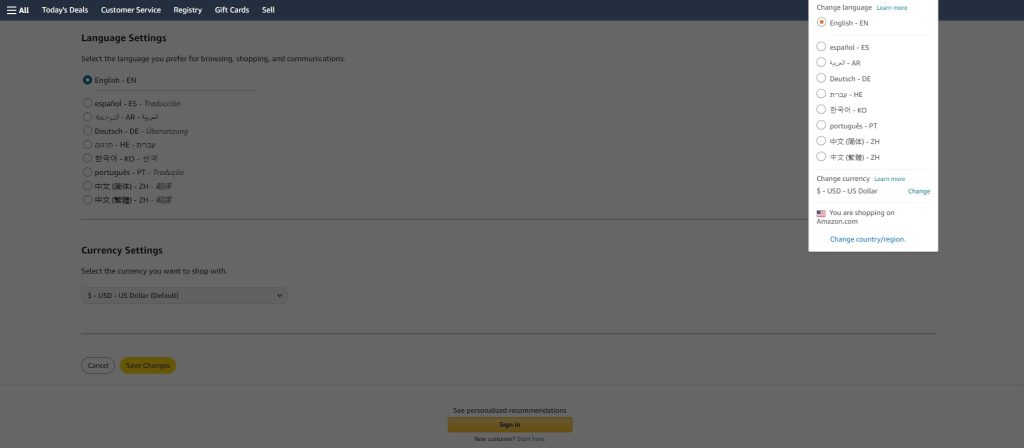How to Manage a Multilingual Website

Managing a multilingual website is crucial for businesses expanding globally. This strategy involves careful planning, selecting appropriate tools, and implementing best practices. Key elements include choosing the right Content Management System, designing flexible layouts, and offering multilingual customer support. By implementing these aspects, businesses can create an effective online presence that engages diverse audiences worldwide, crossing linguistic and cultural boundaries.
Understanding the Importance of Multilingual Websites
In today’s interconnected world, multilingual websites have become essential for businesses aiming to expand their global reach. By offering content in multiple languages, companies can effectively communicate with an international audience, breaking down language barriers and enhancing accessibility. This approach not only demonstrates cultural sensitivity but also significantly increases the potential for market expansion.
Language accessibility is a crucial factor in user experience, as visitors are more likely to engage with and trust content presented in their native language. By providing information in various languages, businesses can cater to diverse demographics and improve their chances of converting visitors into customers. Moreover, multilingual websites contribute to better search engine optimization (SEO) for different regions, increasing visibility in local markets.
Cultural relevance plays a vital role in connecting with international audiences. Adapting content to reflect local customs, idioms, and preferences shows respect for different cultures and helps build stronger relationships with potential customers. This localization effort can lead to improved brand perception and customer loyalty across various markets.
By investing in multilingual websites, businesses can tap into new markets, diversify their customer base, and gain a competitive edge in the global marketplace. As the world becomes increasingly connected, the importance of language accessibility and cultural relevance in online presence cannot be overstated.
Planning Your Multilingual Website Strategy
Planning a multilingual website strategy requires careful consideration and thorough market research. Begin by identifying your target languages based on your business goals and potential audience reach. Conduct in-depth market research to understand the cultural nuances and preferences of each target market.
Content prioritization is crucial when managing a multilingual website. Start by translating your core pages and gradually expand to other sections. Develop a comprehensive localization strategy that goes beyond mere translation, ensuring that your content resonates with local audiences.
Cultural adaptation is a key aspect of successful multilingual websites. This involves adjusting images, color schemes, and even layout to suit local tastes and customs. Pay attention to local holidays, idioms, and cultural references to make your content more relatable.
Implement a content management system that supports multiple languages and allows for easy updates across all versions of your site. Consider using professional translation services or native speakers to ensure accuracy and cultural relevance.
Finally, regularly review and update your multilingual strategy based on user feedback and analytics. This will help you continually improve your website’s performance across different markets and languages.
Choosing the Right Content Management System (CMS)
When managing a multilingual website, selecting the right Content Management System (CMS) is crucial for seamless operation and efficient content management. A multilingual CMS should offer robust language plugins and translation management features to streamline the process of creating and maintaining content in multiple languages.
Look for a CMS that provides intuitive content organization tools, allowing you to easily structure and categorize your multilingual content. This ensures that your team can efficiently manage and update information across different language versions of your site.
User-friendly interfaces are essential for both content creators and administrators. Choose a CMS that offers a clear and intuitive dashboard, making it simple to switch between languages, manage translations, and oversee the entire multilingual content ecosystem.
Many modern CMS platforms offer built-in translation management systems or integrate well with third-party translation services. These features can significantly reduce the time and effort required to translate and localize your content, ensuring consistency across all language versions of your website.
Ultimately, the right multilingual CMS will depend on your specific needs, the scale of your website, and your team’s technical expertise. Consider factors such as scalability, support for your required languages, and compatibility with other tools in your tech stack when making your decision.
Implementing Proper URL Structure for Multilingual SEO
Implementing a proper URL structure is crucial for effective multilingual SEO. When managing a multilingual website, there are several approaches to consider for organizing language-specific URLs:
- Country-code top-level domains (ccTLDs): Use separate domains for each language/country, such as example.fr for French or example.de for German. This method provides the strongest geo-targeting signal but requires more resources to maintain.
- Subdirectories: Implement language versions in subdirectories of your main domain, like example.com/fr/ for French or example.com/de/ for German. This approach is easier to manage and maintains the domain authority across all language versions.
- Subdomains: Create language-specific subdomains, such as fr.example.com or de.example.com. This method offers a balance between ccTLDs and subdirectories but may be perceived as separate entities by search engines.
Regardless of the chosen structure, it’s essential to implement hreflang tags to indicate the language and regional targeting of each page. These tags help search engines understand the relationship between your multilingual content and serve the appropriate version to users.
By carefully considering your URL structure and implementing proper language indicators, you can improve your website’s visibility and user experience across different languages and regions.
Content Translation and Localization Best Practices
Managing a multilingual website requires a strategic approach to content translation and localization. While machine translation has made significant strides, it’s often not sufficient for capturing the nuances of language and culture. Professional translation services remain crucial for ensuring accuracy and cultural relevance.
To achieve high-quality translations, consider implementing a hybrid approach. Start with machine translation for efficiency, followed by human editing to refine the content. This method helps maintain consistency while allowing for the incorporation of cultural nuances, idioms, and expressions that automated systems might miss.
When localizing content, it’s essential to go beyond mere word-for-word translation. Consider adapting imagery, color schemes, and even layout to suit the target audience’s cultural preferences. Pay special attention to idioms and expressions, as these often don’t translate directly and may require localized alternatives to convey the same meaning.
Investing in professional translators who are native speakers of the target language can significantly improve the quality of your multilingual content. These experts can ensure that your message resonates with local audiences, avoiding potential misunderstandings or cultural faux pas.
Remember that localization is an ongoing process. Regularly review and update your translated content to reflect changes in language use, cultural trends, and your own evolving brand message. By following these best practices, you can create a truly global online presence that effectively engages diverse audiences.
Designing for Multiple Languages

Managing a multilingual website requires careful consideration of various design elements. Responsive design is crucial, as it ensures your site adapts seamlessly to different screen sizes and orientations across languages. When implementing your design, account for text expansion, as some languages may require up to 30% more space than others. This is particularly important for buttons, navigation menus, and other constrained areas.
Right-to-left languages, such as Arabic and Hebrew, present unique challenges. Ensure your layout can flip horizontally, including text alignment, icons, and navigation elements. Font compatibility is another key factor; choose typefaces that support multiple languages and maintain legibility across different scripts.
Color symbolism varies across cultures, so research the meanings associated with your color palette in target markets. What conveys positivity in one culture may have negative connotations in another. By addressing these factors, you’ll create a more inclusive and effective multilingual website that resonates with diverse audiences worldwide.
Managing Multilingual Customer Support
Managing multilingual customer support is crucial for businesses aiming to expand their global reach. To effectively manage a multilingual website, start by implementing a robust content management system that supports multiple languages and allows for easy updates across all versions. Establish language-specific support teams to handle inquiries from different regions, ensuring native-level communication and cultural understanding.
Leverage translation tools to assist with initial content creation and basic customer interactions, but always have human translators review important communications for accuracy and nuance. Implement AI-powered chatbots that can communicate in multiple languages, providing instant support for common queries and freeing up human agents for more complex issues.
Develop comprehensive FAQs in all supported languages, addressing region-specific concerns and common questions. This proactive approach can significantly reduce the volume of support tickets and improve customer satisfaction.
Invest in cultural sensitivity training for your support teams, ensuring they understand the nuances of communication across different cultures. This knowledge will help prevent misunderstandings and foster positive customer relationships.
By implementing these strategies, businesses can effectively manage multilingual customer support, enhancing their global presence and providing a seamless experience for customers worldwide.
Tracking and Analyzing Multilingual Website Performance
Tracking and analyzing the performance of a multilingual website is crucial for understanding how different language versions resonate with your global audience. To effectively manage a multilingual website, it’s essential to implement language-specific analytics. This allows you to gather valuable insights into user behavior across various language versions.
Start by setting up separate tracking for each language version of your site. This enables you to compare metrics such as conversion rates, bounce rates, and time on page for different languages. Pay close attention to how users interact with your content in their native language compared to other versions.
Utilize A/B testing to optimize your multilingual content. Test different headlines, calls-to-action, and layouts to determine what works best for each language audience. Remember that cultural nuances may influence user preferences, so what works well in one language may not be as effective in another.
Monitor language-specific search terms and adjust your SEO strategy accordingly. This can help improve your website’s visibility in different markets and attract more relevant traffic.
By consistently analyzing these language-specific metrics, you can make data-driven decisions to enhance your multilingual website’s performance and provide a better user experience for your global audience.
Maintaining and Updating Multilingual Content
Maintaining and updating multilingual content requires a strategic approach to ensure consistency across all language versions. To effectively manage a multilingual website, implement a robust content synchronization system that tracks changes and updates across different language versions. Utilize version control tools to maintain a clear history of content modifications and facilitate easy rollbacks if needed.
Leverage translation memory software to store previously translated content, reducing redundancy and maintaining consistency in terminology across languages. This not only saves time but also helps preserve brand voice across different locales.
Regular content audits are crucial for identifying outdated or inconsistent information across language versions. Schedule these audits periodically to ensure all content remains accurate and relevant.
Develop a comprehensive content calendar that accounts for multilingual updates. This helps coordinate translation efforts, ensuring that new content is rolled out simultaneously across all language versions, maintaining parity in information dissemination.
By implementing these strategies, you can streamline the process of maintaining and updating multilingual content, ensuring a cohesive and up-to-date user experience across all language versions of your website.
Embracing the Challenges and Rewards of Multilingual Website Management
Multilingual website management presents both challenges and opportunities for businesses seeking to expand their global reach. While it requires significant investment in time, resources, and expertise, the potential rewards are substantial. By effectively managing a multilingual website, companies can connect with diverse audiences, increase their market share, and build a strong international presence.
The key to success lies in adopting a strategic approach that combines cultural sensitivity, technical proficiency, and ongoing optimization. This includes careful planning, thorough research of target markets, and implementation of best practices in website localization and translation. Additionally, leveraging advanced technologies such as translation management systems and AI-powered tools can streamline processes and improve efficiency.
As the digital landscape continues to evolve, businesses that embrace multilingual website management will be better positioned to thrive in an increasingly interconnected world. By overcoming language barriers and cultural differences, companies can forge meaningful connections with global customers, ultimately driving growth and success on an international scale.